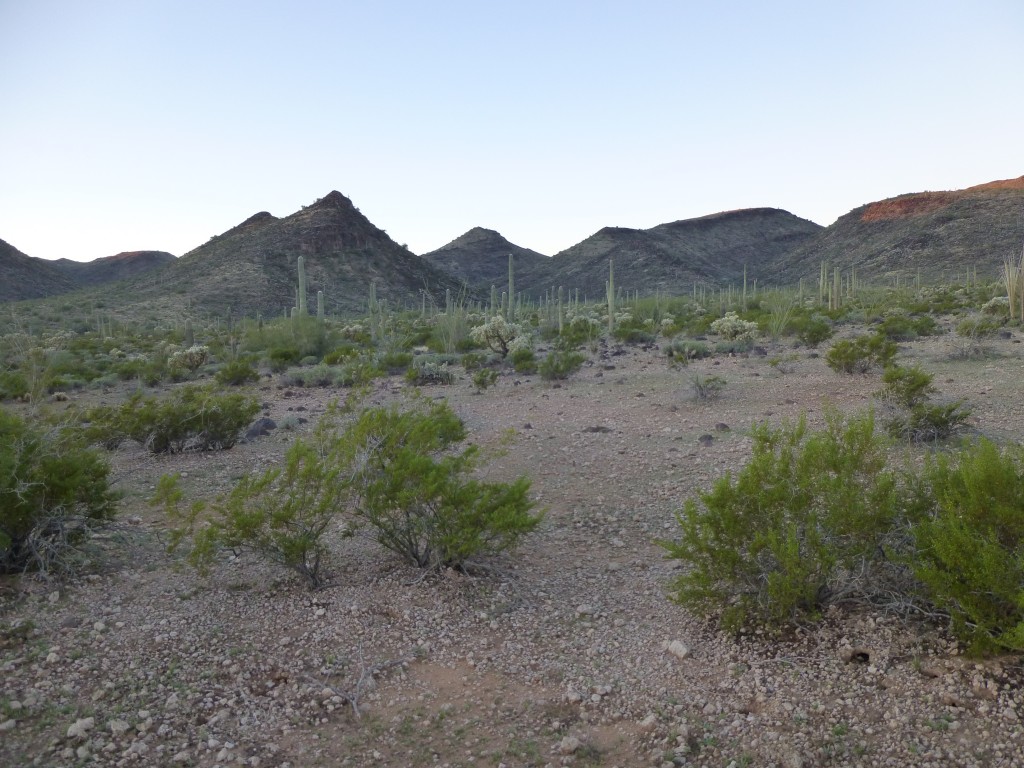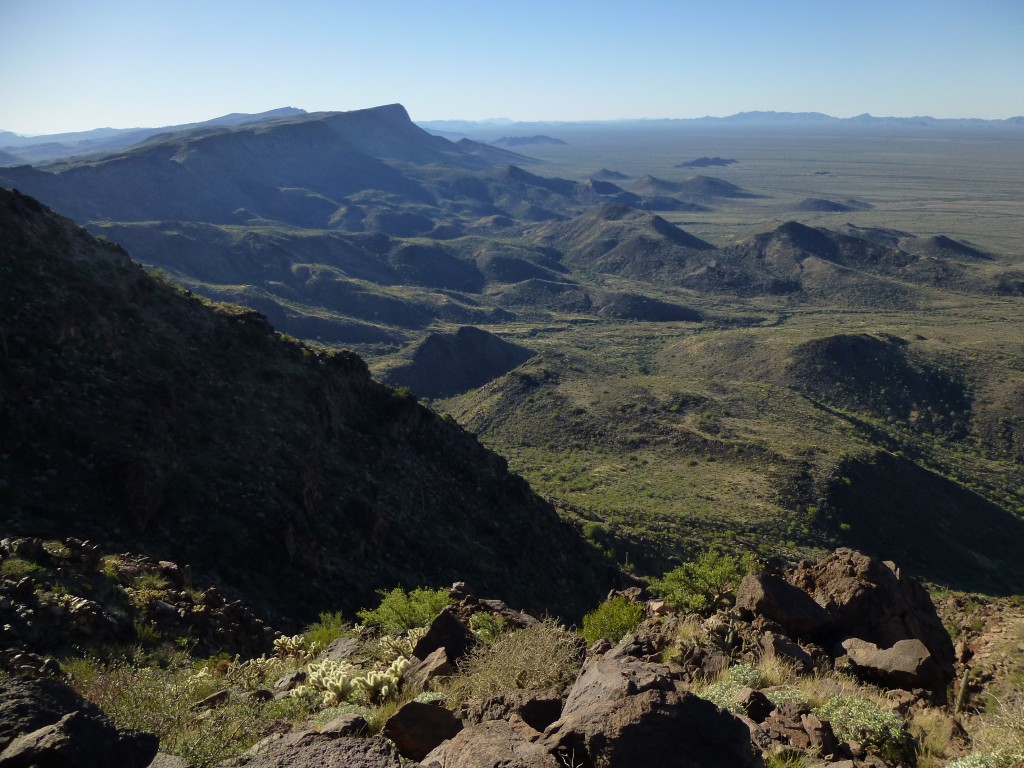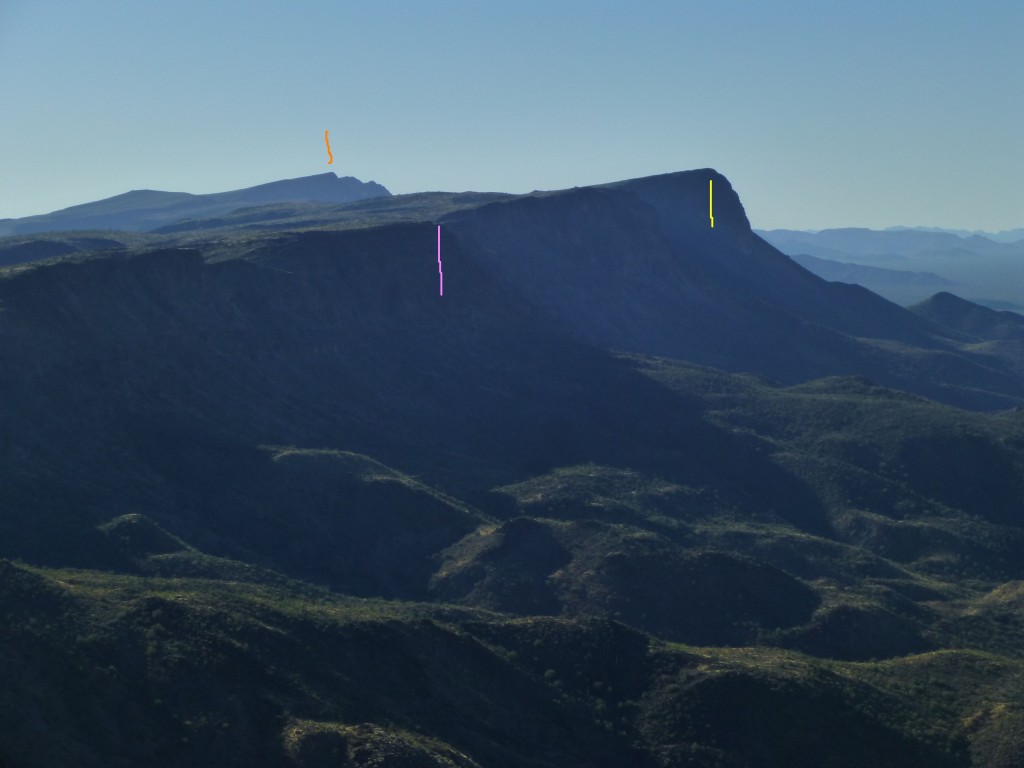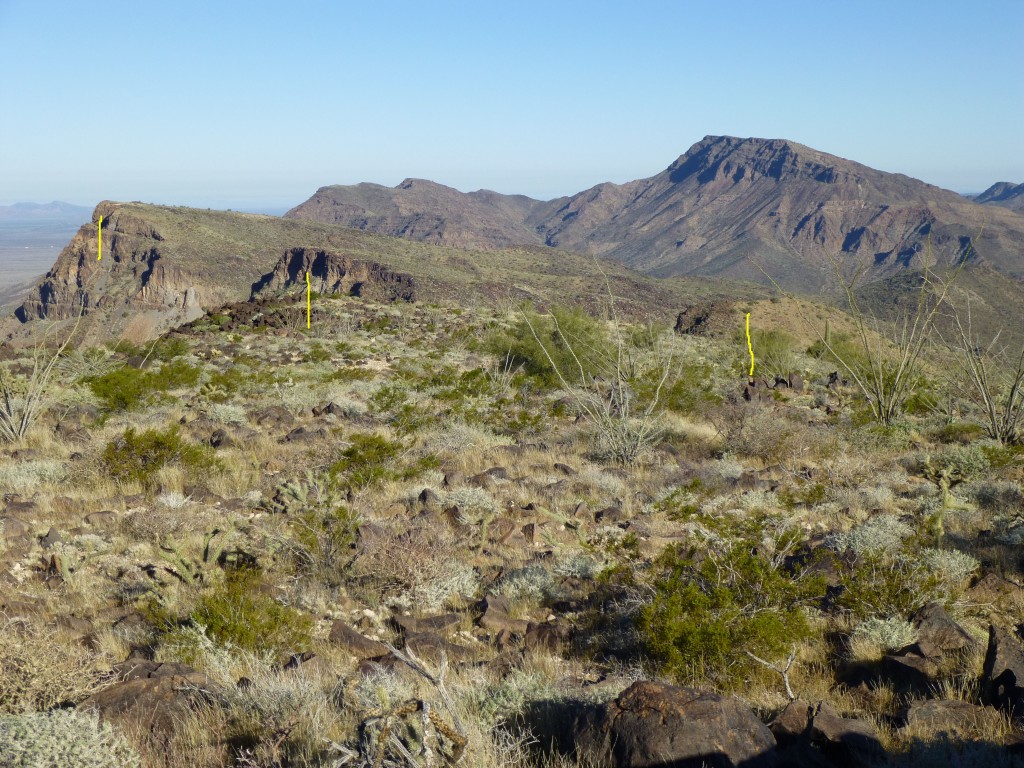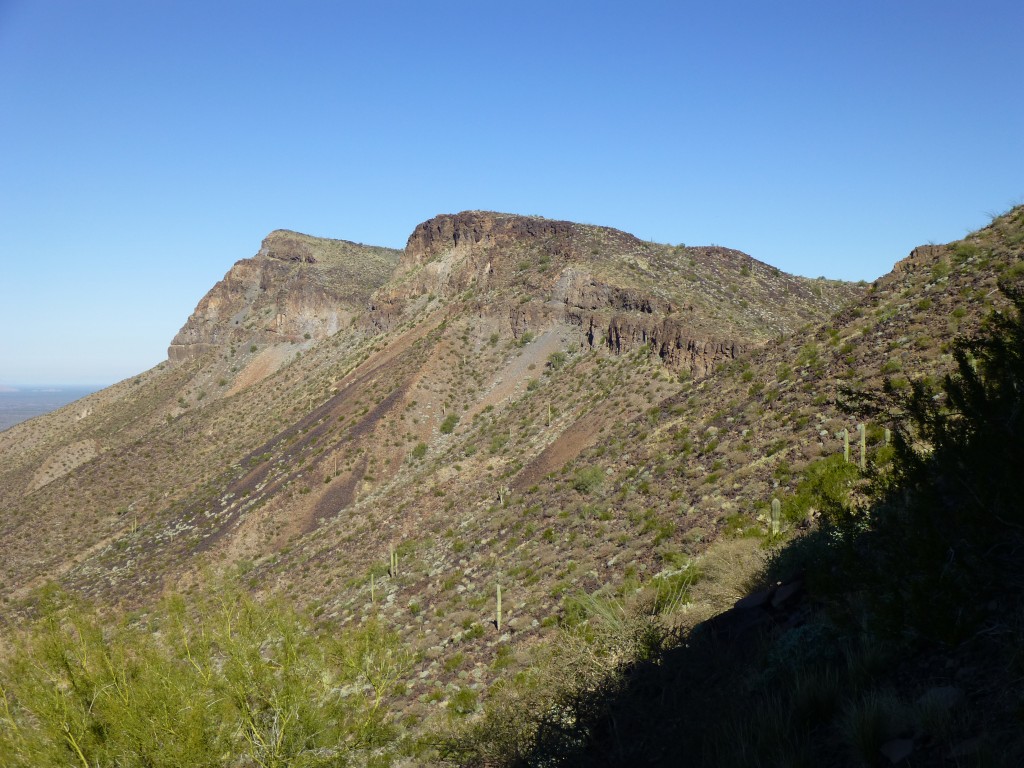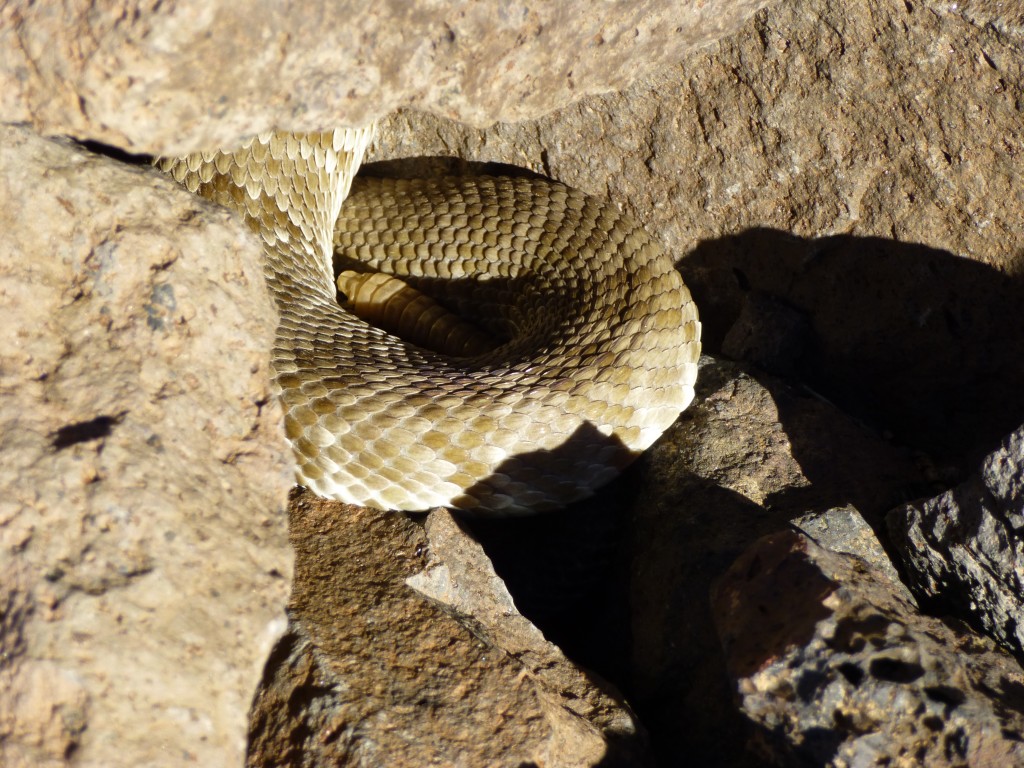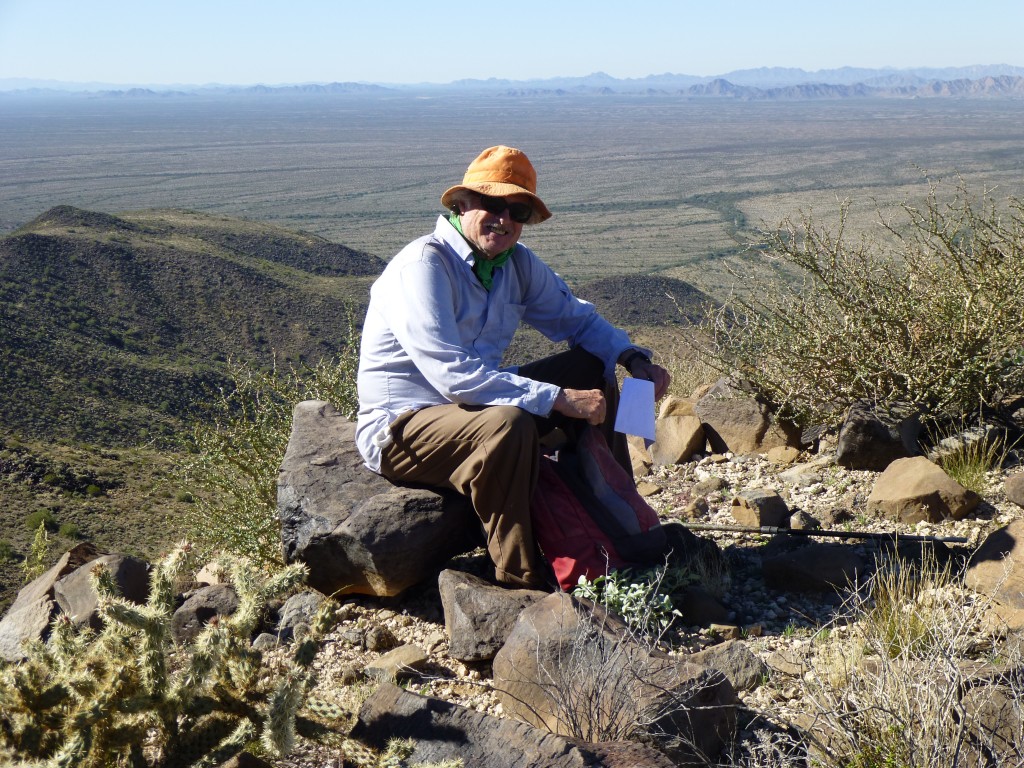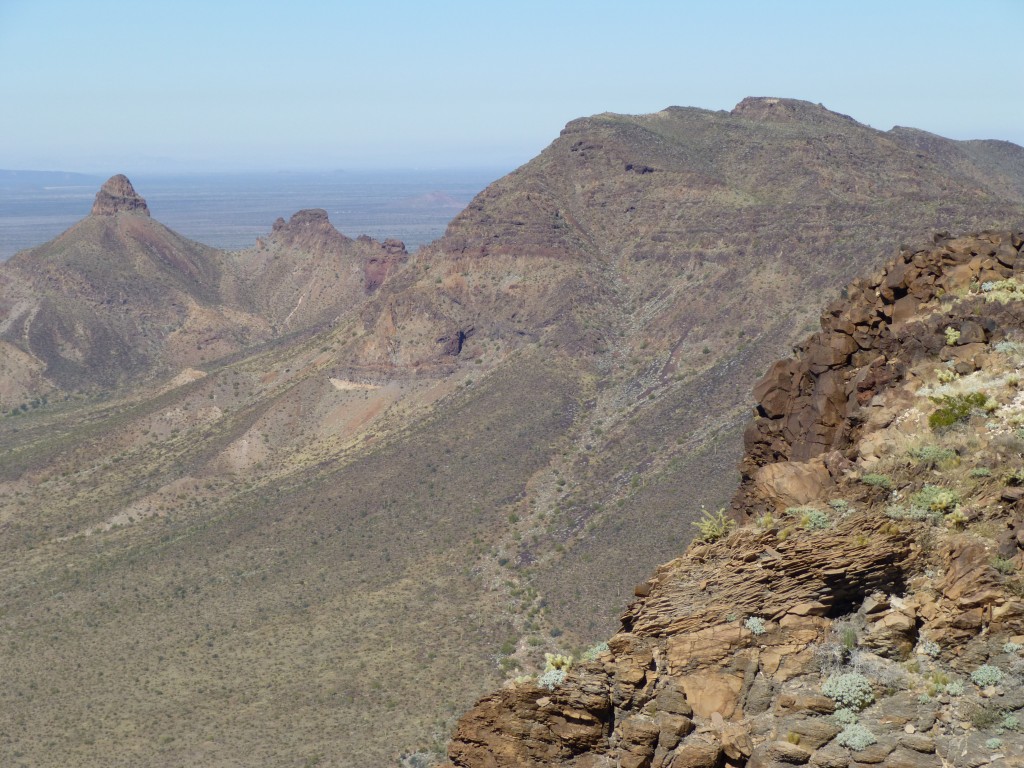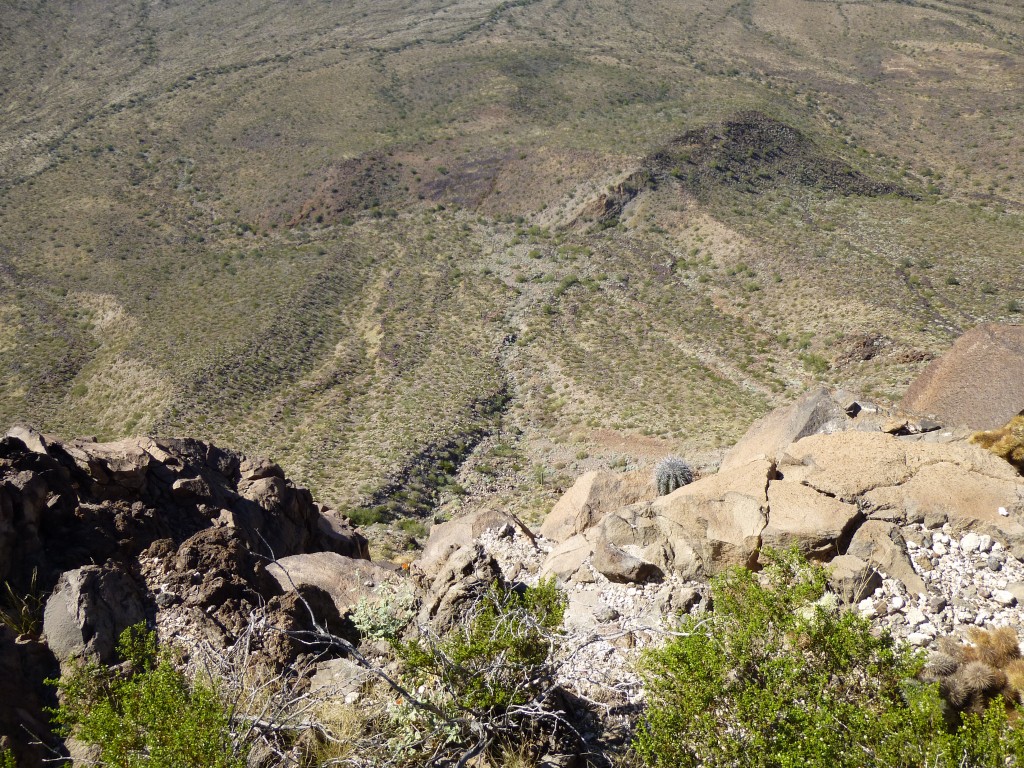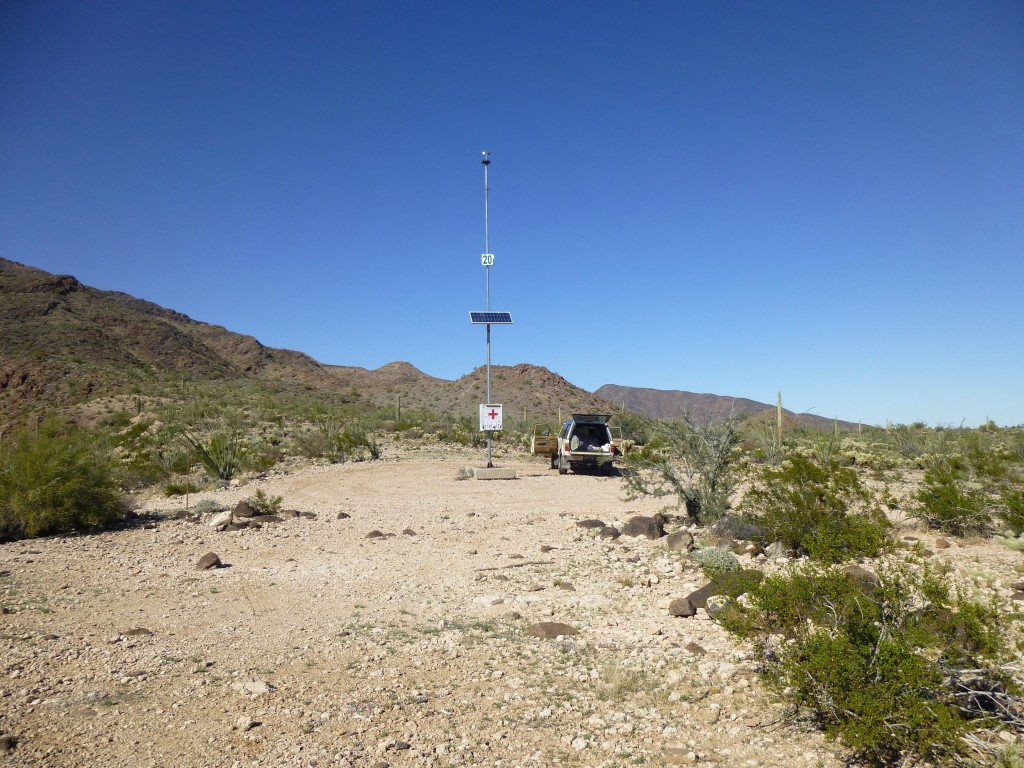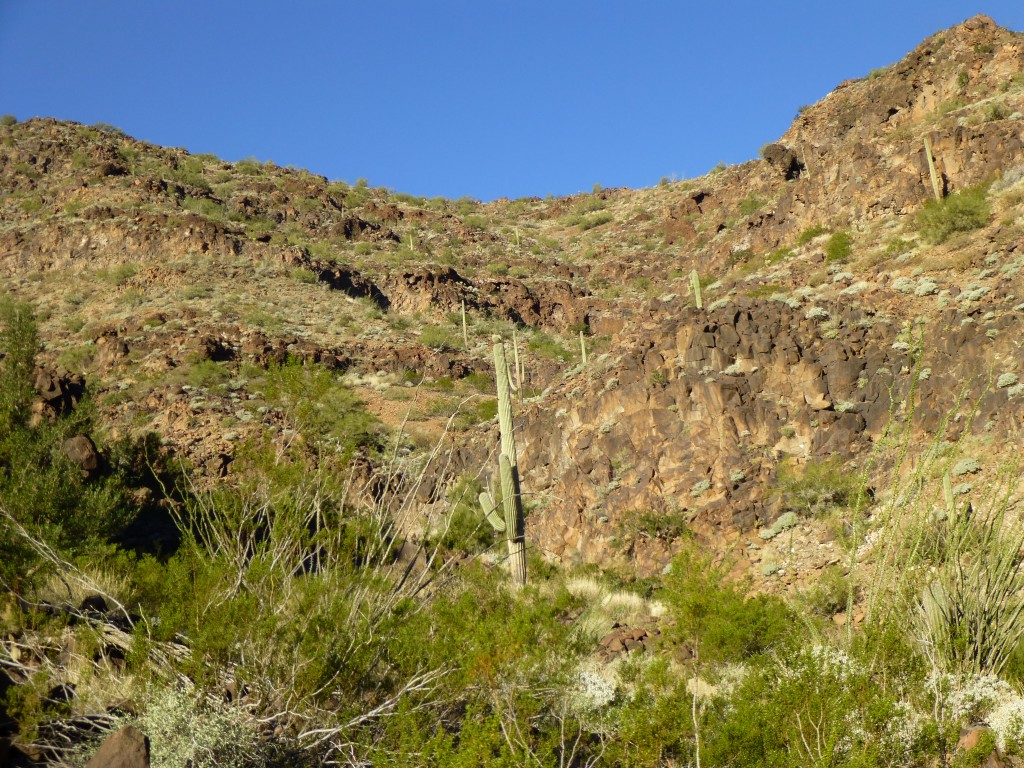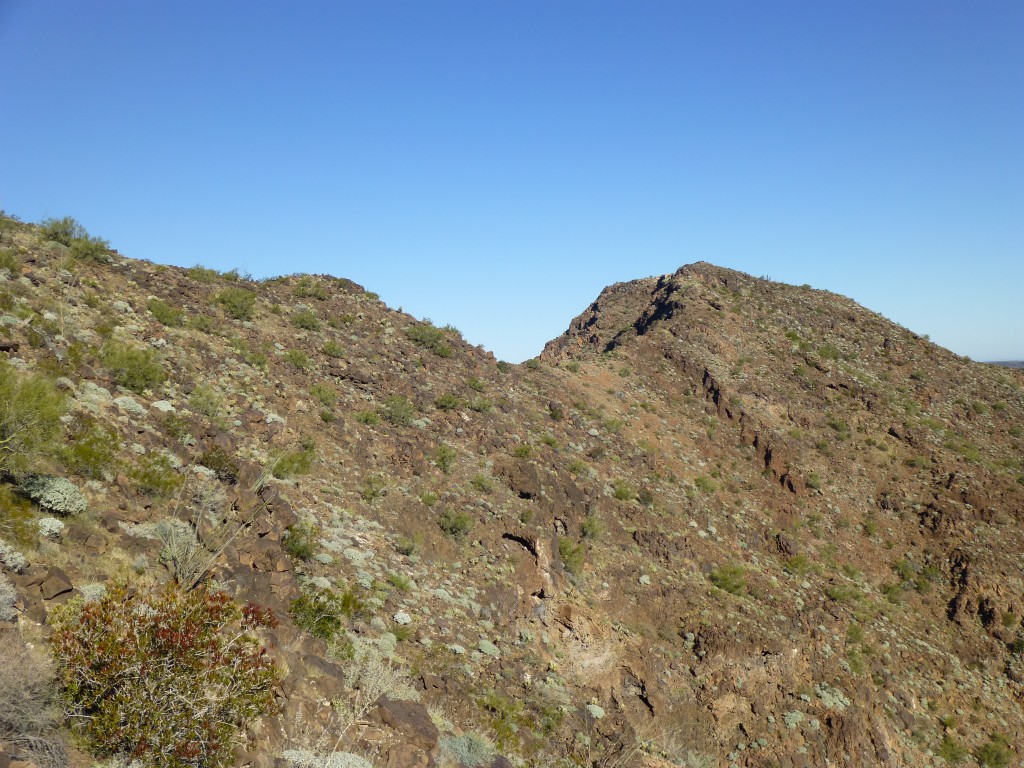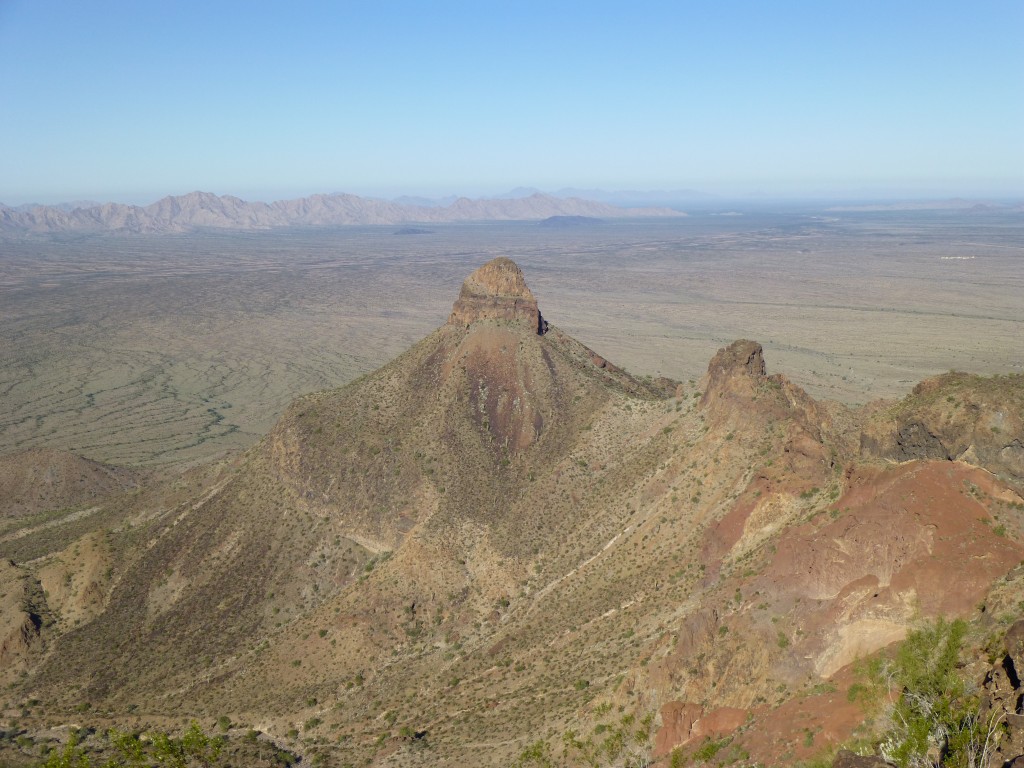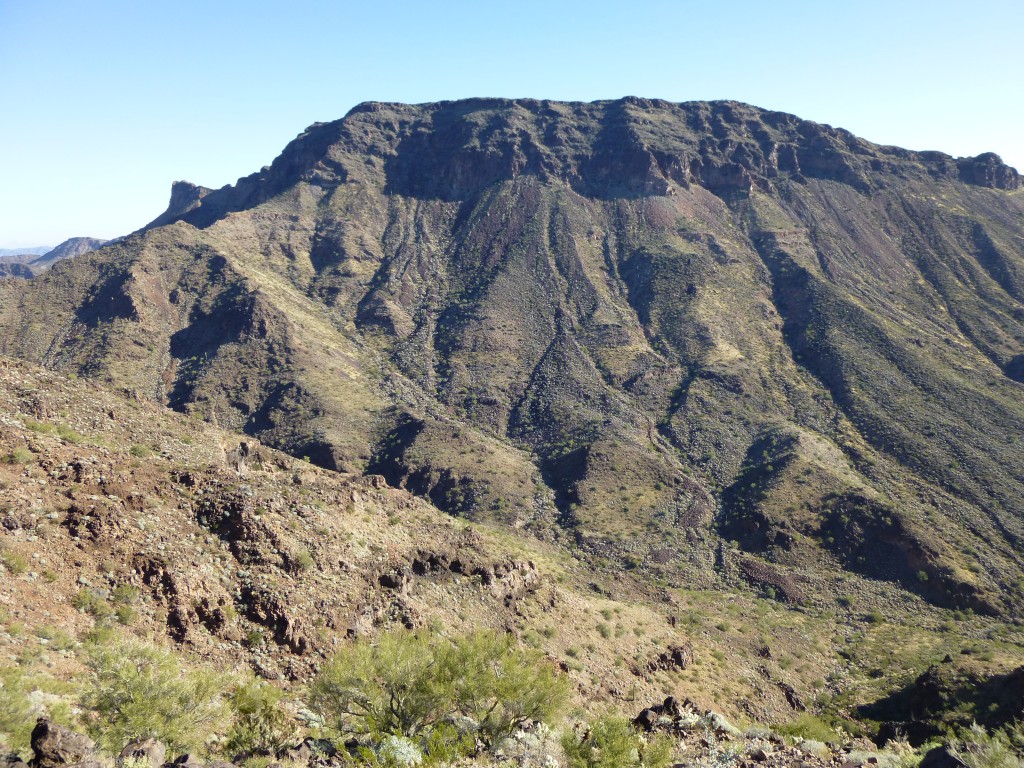Charlie Bell Pass – I’ve been there so many times over my 30 years of desert climbing, the place now seems familiar and comfortable, like an old pair of shoes. Every time I go there, I think it’ll be my last, that the area is all climbed out, but something always draws me back. Sometimes I’ve gone alone, but happily I’ve been with one friend or another most of the time. Andy Martin and I did Growler Peak from there. Mark Adrian and I started our Granite Mountains expedition from the same spot. Twice, I started a climb with Andy Bates from the pass, and also with John Klein one time. My backpacking trip through the northern Growlers began and ended there. Even with all of that, other peaks needed to be done – once again, the pass was the perfect starting point.
My old friend, Bob Packard, needed to climb some peaks in the same area, so we finally arranged to meet and do them together. It had been 8 years since I’d last climbed with Bob, and that was for a brutally-long day on Rhodes Peak in the Galiuros along with Andy Martin. On February 6, 2015, Bob and I met at the Cabeza Prieta headquarters in Ajo and convoyed in to the pass with both vehicles. He has a camper on his pickup which allows him to travel in style, while I was roughing it in my old truck and topper (quite primitive, really).
We settled in for a good night’s sleep, and that’s more or less what we got, if you don’t count the occasional interruption – by that, I mean the vehicles driving by in the night. The Border Patrol regularly patrols the road, at least once a night driving out to the pass, playing a cat-and-mouse game with smugglers who routinely use the area as a conduit for their illicit trade in drugs and humans. Sometimes a tourist will drive out from Ajo in the safer daylight hours, but by nightfall they’ve skedaddled back to the security of town. More than once, I’ve seen a smuggler drive by in the middle of the night, in a big hurry – it’s always disconcerting to know that you’re only a few feet away from the Bad Guys.
With our usual early start, we were moving south across easy ground by first light. In this next photo, taken before sunrise, you can see our first peak in the distance. It is just to the right of center – the long, dark slope going up to the right, way in the back.
I’d been planning this day for so long, it was like I already knew the terrain. Bob and I made good time, crossed a few washes, then followed a major drainage up between two ridges. Up a steep sidehill, on to the western of those ridges, then a walk through open country to the summit of Peak 2450. Here is a look south down the length of the Growler Mountains, one of my favorite Arizona ranges. I like how this photo shows the tumbled “foothills” of the range.
The above photo shows some important stuff, so below is a telephoto of the same view with some things I’d like to point out. I’ve drawn three lines on the photo. The pink one is below Charlie Benchmark (3.6 miles away); the yellow line is below Peak 2870 (4.4 miles away); the orange line is above the range high point, Gro Benchmark (8.6 miles away). Notice the very steep slope to the right of the yellow line. I surprised a couple of drug cartel lookouts on that peak, and they ran away down that slope, much to my amazement.
The Growler Mountains have a spectacular 1,500-foot western escarpment, and we stood right at the edge of it. It was 9:10 AM, and we soaked up the sun’s rays – it felt good. Although we found neither cairn nor register, we knew that old friends Bob Martin and Gordon MacLeod had preceded us. We didn’t leave a register. After a bite to eat, it was decision time. Another peak sat 1.2 air miles to the northwest. Bob and I both needed to climb it, but he was unsure if he’d go straight there today and do it on the way back to the trucks, as I chose to do, or if he’d do it tomorrow as a separate outing. It was early, we were moving well, and he decided to accompany me – I was glad for his company. Here’s a view looking north from our summit, which I’m including because it shows something of the rest of our day. See the 3 yellow lines? They show the tops of things we had to deal with ahead. The one on the right is Point 2210; the one in the middle is Point 2270; the one on the left is Peak 2410.
We set out north downhill along the north ridge and dropped down to 2,000 feet. Traveling as we were right along the crest, we were treated to non-stop breathtaking views. At one point, we had to make a choice – climb up and over an intervening bump of 200 feet, elevation 2,210′, or sidehill on the western slope of the escarpment.
The latter seemed like it’d be quicker, with less elevation gain, so that’s what we chose. It was slow going, dodging cliffy bits, and probably more hassle than it was worth, but we finally arrived at another saddle at 2,000 feet. In hindsight, it would’ve been quicker to have gone over the bump. The above photo shows the sidehill. We needed to get out of the shade, across the sunny slope and around the shoulder coming down from the right. The bump in the middle is Point 2210, and the one on the left is Point 2270. Once we got out into the sunlight, we surprised this big fella – a western diamondback rattlesnake – he crawled under some rocks to hide.
From this saddle, it was a simple climb of 270 feet to the top of yet another bump (elevation 2,270′). As we completed this, we spoke at length of a climber friend who had recently passed away – a sad fact if you’ve been climbing for many years as both of us have. Well, this still wasn’t our summit, merely another bump along the ridge. Here’s Bob on 2270 with the Growler Valley in the background.
Once again, down we dropped to a final saddle, this time at 2,050 feet. Now, a final slog up a final slope to reach Peak 2410. Once again, no cairn or register, so we left one of our own. Here’s a view from the top. Peak 2530, on the right, would be our goal for tomorrow.
This next photo shows the drop-off from the summit, straight down to the Growler Valley floor.
We’d arrived around noon, and after perhaps 30 minutes on the summit, we set out on the home stretch, which was all downhill. All we needed to do was follow a long ridge, passing over Point 2090, but after losing about 400 feet, we got off track and ended up on a lesser ridge farther north. That got us nowhere fast, and there we were looking down into a canyon. It was our fault – we were talking non-stop and not paying enough attention. No matter, it was simple enough to carry on, but we did end up dropping down into the canyon and doing some bushwhacking. Following it down, we emerged on to flatter ground, and by a quarter of three, we were back at camp. That last stretch seemed to drag, even though it was across fairly level ground. Here’s a view of my truck at Charlie Bell Pass, parked under the flashing blue-light emergency beacon.
We had plenty of time to relax and enjoy happy hour, giving us a chance to get caught up. Bob keeps up the most vigorous climbing schedule of anyone I know, and shows no sign of slowing down at 78 years young. He has an impressive world-wide climbing resumé, and his lifetime tally of summits can go head-to-head with anyone on the planet. It was an honor to be climbing with him again.
Another night was spent at the same spot, with more passers-by disturbing our sleep. The next morning, we moved the trucks right up to the pass proper and parked, this being the farthest we were allowed to drive and also the ideal spot to park. I had once parked there for 9 days of climbing, and in that long absence some rat-bastard broke into my truck and ripped me off. For a day or two, though, there was no risk. Today’s goal was the second-highest peak in the area, one we’d both ignored for way too long.
From the pass, we walked down the old road towards Charlie Bell Well, losing a couple of hundred feet before heading cross-country to the west. That put us into a major wash, which we followed north for a mile. Again, another choice to make. It looked like we could climb up through some cliffs guarding the east side of our peak, or we could carry on north up the wash and use easier ground to come at the summit from the north. I didn’t feel like the latter, as it seemed a lot farther, so I talked Bob into the cliff route.
Up we went, and there were some iffy bits, then an annoying up-and-down walk north along the ridge.
We finally topped out at 10.00 AM. There we were, Peak 2530. The summit register held the names of Barbara Lilley, Gordon MacLeod and Bob Martin, all of whom are world leaders in the peakbagging realm.
What a spot! To the west were messy cliff bands down to the toughest climb in the area, Sheep Peak.
To the east rose the bulk of Growler Peak, at 3,027 feet the highest in this part of the range. When John Klein climbed it a few years ago, he found a lookout for the drug cartel calmly sitting on the summit. No words were spoken, but the guy merely acknowledged John’s presence.
Bob and I enjoyed lunch with this million-dollar view, took photos and signed in to the register. This was one of those places you just don’t want to leave, it’s beauty is so unforgettable. Both of us realized that the way we’d come up, the way I’d suggested, was more trouble than it was worth. His suggestion of dropping north, then east down into the canyon and following the wash all the way out was much better, so we did. The day had warmed up nicely, and even going downhill we were sweating up a storm. It was just a matter of boulder-hopping our way down, down, down and before we knew it, we were back on the cross-country walk to hit the old road, then the steep trudge up the hill to the trucks. It was over not much after noon, and that felt just about right. Another great trip with good peaks climbed, and in good company.
Please visit our Facebook page at: https://www.facebook.com/pages/Desert-Mountaineer/192730747542690

